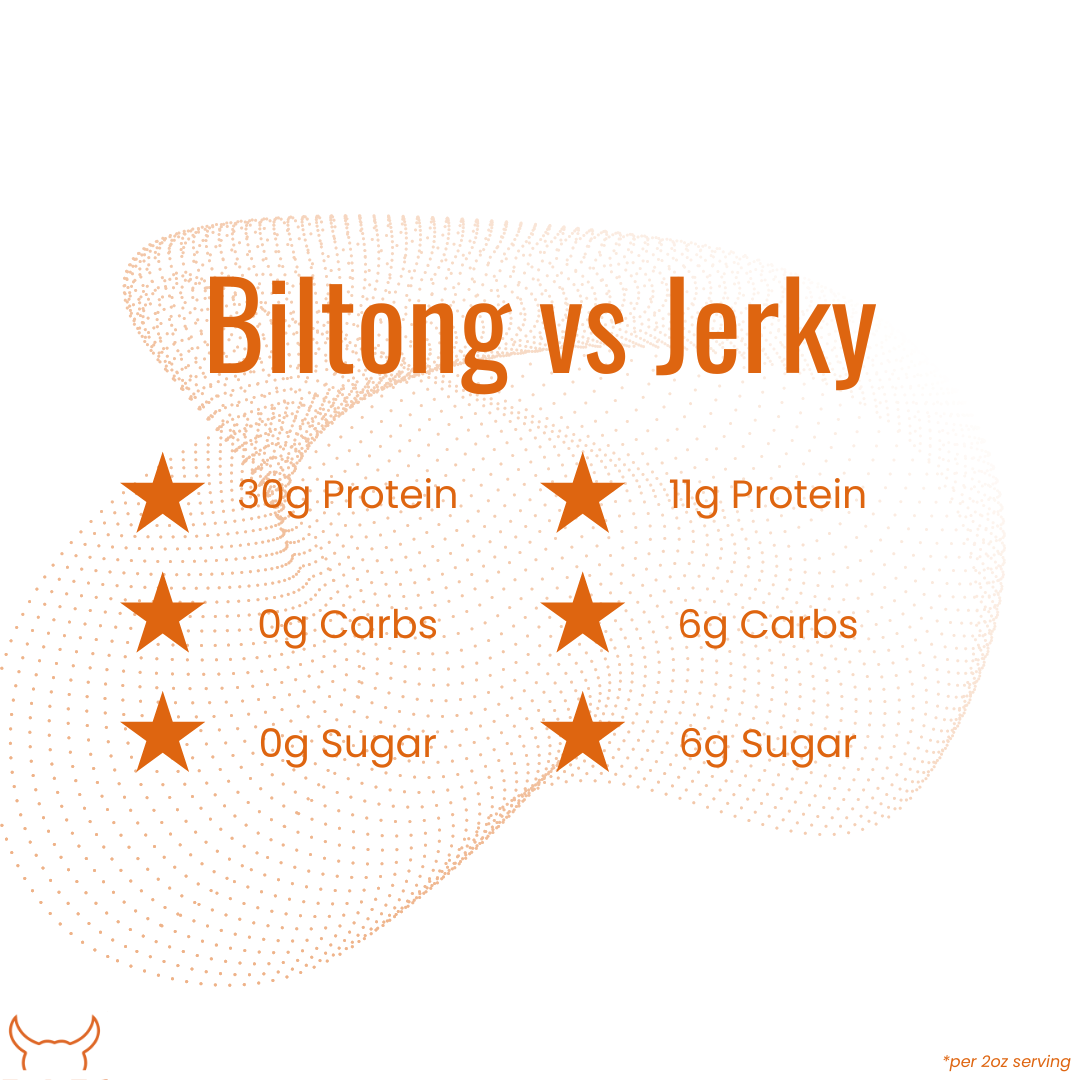In the world of savory protein snacks, biltong and jerky have emerged as popular options for those seeking a convenient and tasty way to curb their hunger and boost their protein intake. These delectable treats offer a burst of flavor and energy on the go, making them a staple for hikers, athletes, and anyone with an active lifestyle. But when it comes to choosing between biltong and jerky, which is the healthier snack choice? Let's dive into the ingredients, nutritional profiles, and production methods of each to help you make an informed decision.
Ingredients and Production:
Biltong: Biltong is a traditional South African snack that has gained international popularity for its unique preparation method. To make biltong, high-quality cuts of beef are marinated in a mixture of vinegar, salt, and various spices. Unlike jerky, biltong is air-dried rather than smoked or cooked at high temperatures. This air-drying process takes several days, during which the meat is hung in a well-ventilated area, allowing it to slowly cure and develop its rich flavor.
Jerky: Jerky, on the other hand, is a dried meat snack that can be found in various cultures around the world. The process of making jerky typically involves slicing lean cuts of meat into thin strips and marinating them in a seasoned mixture that might include ingredients like soy sauce, Worcestershire sauce, and sugar. After marinating, the meat is either smoked or cooked at low temperatures to remove moisture and preserve the meat. This cooking process can vary, with some commercial options using additional preservatives or artificial additives.
Nutritional Profiles:
Biltong: Biltong is often praised for its simplicity in terms of ingredients and its minimal processing. It tends to have fewer additives compared to some jerky brands. Biltong is generally lower in sodium, as the air-drying method allows the meat to retain more of its natural flavors without the need for excessive seasoning. The result is a snack that is rich in protein and nutrients, including zinc, iron, and B vitamins. However, due to the air-drying process, biltong can be relatively high in fat, albeit the healthy kind, as it retains some of the meat's natural fats.
Jerky: The nutritional content of jerky can vary significantly depending on the brand and flavor. While jerky is also a great source of protein, it often contains more sodium and sometimes added sugars compared to biltong. Additionally, some jerky brands may include artificial flavors, colors, and preservatives, which can detract from its health benefits. Opting for jerky with minimal additives and lean cuts of meat can help mitigate these concerns.

When choosing between biltong and jerky as a healthier snack choice, both have their merits. Biltong stands out for its minimal processing, rich nutrient content, and use of natural ingredients. On the other hand, jerky offers a wider range of flavors, and longer shelf life. To make the healthiest choice, opt for biltong with lean cuts and moderate consumption to manage its fat content. With jerky, read labels carefully, choosing options with minimal additives and lower sodium levels.

